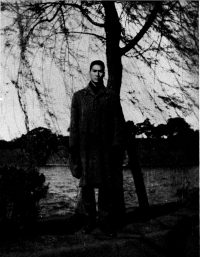Tokyo Suijō Keisatsusho (Tokyo Water Police Station). At 2:00 p.m., as part of our school schedule, we visited the Tokyo Water Police Station on the bank of the Sumida River. The Station Chief received us, and, boarding two police motor boats, we enjoyed a nice ride along Tokyo’s principal river (like Manila’s own Pasig), passing under huge steel bridges that spanned it.
The Kachidoki-bashi Bridge near the mouth of the river (which leads out to Tokyo Bay) looks like Manila’s Quezon Bridge but is much longer and is of the type that opens up in the middle to let big steamers in. Other bridges under which our motor boats sped by were the Eitai-bashi, which looks like Manila’s Colgante Bridge, and Kiyosu-bashi, like Manila’s Ayala.
The scene along the Sumida River is not different from the Pasig with launches and cascos [flat-bottomed boats] continuously passing by.
We visited a typical police outpost at a strategic point along the river, and its functions were explained to us. There are police outposts at every strategic point along the river to supervise traffic and maintain peace and order. The Tokyo Water Police Station, which is part of the Metropolitan Police Board, has total personnel of about 350 men, plus 150 launch drivers to operate the station’s 80 motor boats. Its organization is similar to ordinary police stations.
This has been a very fruitful afternoon, and we specially enjoyed the motor boat ride.
B-29 Exhibit. At Matsuya Department Store at Ginza we saw on exhibit the first pictures taken of the bombing in North Kyushu two weeks ago. Parts of the “Flying Fortresses” wreckage were also on display. (Japs impressed.)
Mr. Uehara, secretary of the Osaka Branch of the Philippine Society of Japan, took dinner with us tonight. I talked to him for quite a long time on the subject of religion, especially Buddhism and Shintoism.
